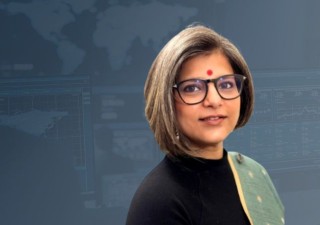Exploring the middle path: A choice between safe harbour and moral responsibility
30 August 2019

The internet was a vulnerable new technology in the early 1990s that required legal safeguards for its key stakeholders to allow rapid growth. Chief amongst these stakeholders were the “intermediaries” which acted as the platforms for bringing together the provider and consumer of information, goods and services.
The transactions on these platforms became the building blocks for the internet revolution and the rise of a new medium for global integration. But as with all media, transactions of a criminal nature are destined to find their place on these platforms and, for this reason, a need to create a liability shield for intermediaries was felt.
In principle, an intermediary which did not initiate a transaction or choose the recipient or modify the transmission was given a blanket defense against prosecution as long as certain due diligence measures were taken by the intermediary. This principle, enshrined in Section 79 of the Information Technology Act, 2000, is at the heart of the controversy today.
The internet is no longer a vulnerable media and has emerged as a medium for disrupting the existing social, political and business structures. The effects of such disruption are now felt more than any time in the past.
The battle lines are therefore being drawn and, with them, the very nature of internet is being re-defined. As one charts the changing landscape of the internet revolution, one can segue to the central theme, i.e. the manner in which various intermediaries are adopting their new role of determining the rights of the participants on its platforms. The legal discourse in this respect has evolved around the following two battle lines:
1) Free speech vs. censorship
2) Brand protection vs. freedom to trade
The first of the two conflicts revolve around the role of an intermediary making a determination as to whether or not to censor content based on an assertion of either a property right (copyright, personality right or right to reputation) or for reasons that such speech is prohibited under law.
Be it Shreya Singhal v. Union of India or MySpace v. Super Cassettes Industries, the legal doctrines that evolved required a form of self-regulation and development of a community reporting and take down mechanism to allow intermediaries to navigate the due diligence requirements under law and avail itself the safe harbour protection.
This, however, is only a stop-gap measure, and the goal posts have already shifted. The Congressional inquiry into Facebook last year and the evolving debate around “fake news” has pushed Facebook (amongst others) to actively participate in the censorship of content on its platform. A look at the community standards of Facebook revels that this is just the tip of the iceberg of the scope of rights that need to be determined by an “intermediary.”
The moral responsibility assumed by the intermediaries such as Facebook has leads us to the question: By being the arbiter of rights and censoring content, is there a paradigm shift in the role of an intermediary and should it embrace its new role with the consequences and liabilities that follow?
One answer to this question may arise from an analysis of the business models adopted and tested by their intermediary brothers in the e-commerce industry. The e-commerce industry has disrupted the existing business models and supply chains to become an existential threat for many a player in the market. Such disruption is of not only the business models but of established legal systems as well, which has allowed for the brand p[rotection vs. freedom to trade debate to emerge.
Two cases – Christian Loubutin SAS v. Nakul Bajaj & Ors.; and Amway India Enterprises ltd. v. 1MG Technologies Pvt. Ltd. and Ors.; have shaped and framed the debate best. Through these cases we can observe the evolution of an intermediary from a passive platform to a central cog in an ecosystem consisting of warehouses, supply chains and delivery services. Such transformations have brought them in direct conflict with established business models such as direct selling models and legal frameworks such as exceptions to the exhaustion principle under trademark law. The e-commerce industry is thus also on the precipice of taking on the moral responsibility and assuming the role of an arbiter of rights. Embracing this new role would directly impinge upon its right to engage in trade freely and without unreasonable interference. This once again bring us to the question: By being the arbiter of rights and choosing the products sold on a platform, is there a paradigm shift in the role of an intermediary and should it embrace its new role with the consequences and liabilities that follow?
The answer to the two questions posed in this paper may lie in choosing a middle path. The solution, perhaps, lies in adopting alternate dispute resolution (ADR) mechanisms to solve the dilemma faced by the intermediaries in choosing between whether or not to be the arbiter of rights.
Exploring the example of the WIPO/UDRP model of resolving domain name disputes, we can examine how an evolved ADR mechanism may be the solution for intermediaries to embrace. ADR alone would not resolve the conflict and may require a more techno-legal approach for faster resolution of such conflicts. Only time will tell if the industry is ready to evolve and adopt the moral responsibility for its role shaping the narrative for the future.








